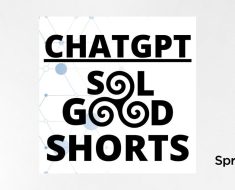Artificial intelligence is reshaping how we create and interact with digital content, and Google’s latest offering, Whisk AI, is a prime example of this evolution. Unlike traditional AI tools that rely heavily on text-based prompts, Whisk allows users to generate unique images using photos as inputs. This experimental tool, currently available through Google Labs in the United States, leverages cutting-edge technology like Gemini AI and Imagen 3 to make creative image generation more accessible. Here’s an in-depth look at Whisk AI, its features, and how it works.
What Is Whisk AI?

Whisk AI is Google’s innovative generative AI tool designed for visual creativity. It allows users to upload images to define the subject, scene, and style of a new image. Instead of crafting detailed text prompts, users can simply drag and drop photos into the platform. These images are then analyzed by Gemini AI, which generates descriptive captions that are fed into Imagen 3 to produce entirely new visuals¹’²’³.
The tool is designed for rapid experimentation rather than precise editing. Whether you’re creating custom designs for stickers, enamel pins, or plush toys, Whisk provides a playful way to explore visual ideas²’⁴.
How Does Whisk AI Work?

Whisk AI operates through a seamless two-step process:
1. Image Analysis with Gemini AI
When a user uploads an image, Gemini AI analyzes it and creates detailed captions that describe its key features. These captions capture the “essence” of the uploaded image rather than replicating it exactly¹’⁵.
2. Image Generation with Imagen 3
The captions generated by Gemini are then processed by Imagen 3, Google’s advanced image-generation model. Imagen 3 synthesizes these descriptions to create new images that blend elements from the uploaded photos while introducing creative variations in details like colors or textures³’⁶.
This combination of technologies ensures that Whisk produces visually compelling results while remaining intuitive for users without technical expertise²’⁷.
Key Features of Whisk AI

1. Image-Based Prompts
Unlike most generative AI tools that rely on text inputs, Whisk uses photos as prompts. Users can upload multiple images to define different aspects of the desired output—such as the subject (e.g., a person or object), scene (e.g., a background), and style (e.g., artistic filters). This makes the tool more approachable for those unfamiliar with crafting detailed textual descriptions¹’²’³.
2. Gemini-Powered Captions
Gemini AI plays a critical role in Whisk’s functionality by automatically generating descriptive captions for uploaded images. These captions serve as the foundation for Imagen 3’s creative process and ensure that each generated image reflects the essence of the input photos⁴’⁵.
3. Imagen 3 Integration
Imagen 3 is Google’s latest text-to-image model and forms the backbone of Whisk’s image-generation capabilities. It processes Gemini’s captions to produce high-quality visuals that seamlessly combine user inputs while allowing room for creative interpretation⁶.
4. Remixing Capabilities
Whisk encourages experimentation by allowing users to remix their creations. By adjusting inputs or adding optional text prompts, users can explore different combinations of subjects, scenes, and styles to generate diverse outputs like digital art or custom merchandise³’⁷.
5. User-Friendly Interface
Whisk’s drag-and-drop interface simplifies the creative process. For users without their own images, Whisk offers an option to use AI-generated suggestions as starting points⁵’ ⁷.
What Can You Create with Whisk AI?

Whisk AI caters to a wide range of creative needs:
- Custom Merchandise: Design unique items like enamel pins or plush toys by combining various visual elements.
- Digital Art: Experiment with artistic styles by remixing existing photos with new filters or effects.
- Rapid Prototyping: Generate quick visual concepts without needing advanced design skills¹’²’³.
While Whisk excels at generating creative outputs quickly, it is not intended for tasks requiring pixel-perfect precision or professional-grade editing⁴’⁶.
Limitations of Whisk AI
Despite its innovative features, Whisk has certain limitations:
- Lack of Precision: The generated images may deviate from user expectations in terms of details like proportions or skin tones.
- Experimental Nature: As an experimental tool available only through Google Labs in the U.S., Whisk is still in its developmental phase and may not yet offer all functionalities found in more mature platforms²’⁵.
- Not Suitable for Professional Editing: Designed for rapid exploration rather than meticulous adjustments, Whisk is better suited for casual creators than professional designers³’⁶.
How Does Whisk Compare to Other Tools?

Whisk stands out from competitors like OpenAI’s DALL-E or Adobe Firefly due to its focus on photo-based prompts rather than text-based ones. This approach simplifies the creative process by letting visuals guide image generation instead of relying on detailed textual inputs¹’²’³.
Additionally, its integration with Imagen 3 gives it an edge in producing high-quality outputs quickly. However, its lack of advanced editing features means it caters more toward casual creators looking for inspiration rather than professionals seeking fine-tuned results⁵’⁷.
Conclusion
Google’s Whisk AI represents a significant step forward in making generative AI tools more accessible and intuitive. By leveraging Gemini-powered captions and Imagen 3 integration, Whisk offers users a fast and fun way to experiment with visual ideas using photo-based prompts. While it has some limitations in terms of precision and availability, its unique approach sets it apart from other tools in the market.
Whether you’re designing custom merchandise or exploring creative possibilities without needing advanced skills or software, Whisk provides an engaging platform for visual experimentation. As Google continues refining this tool based on user feedback, we can expect even more exciting developments in the future¹’²’³.
Citations:
- “Google’s Whisk: A New AI Image Generation Tool in the Market.” InfoTeck Solutions, 19 Dec. 2024.
- “Google’s Newest Artificial Intelligence Tool Uses Image Prompts Instead of Text.” CNN, 17 Dec. 2024.
- “Google Launches Whisk.” TrendSpider Blog, 18 Dec. 2024.
- “Google Unveils Whisk: A Fun New AI Tool For Image Creation.” Latin Times, 18 Dec. 2024.
- “Google’s New AI Tool Uses Image Prompts Instead of Text.” CNN, 17 Dec. 2024.
- “Google Unveils Whisk: The Future of AI Image Generation with Image-Based Prompts.” OpenTools.ai, 17 Dec. 2024.
- “Whisk Works Magic! Google’s New AI Image Generation Tool.” AI Base, 17 Dec. 2024.
Please note, that the author may have used some AI technology to create the content on this website. But please remember, this is a general disclaimer: the author can’t take the blame for any mistakes or missing info. All the content is aimed to be helpful and informative, but it’s provided ‘as is’ with no promises of being complete, accurate, or current. For more details and the full scope of this disclaimer, check out the disclaimer page on the website.




